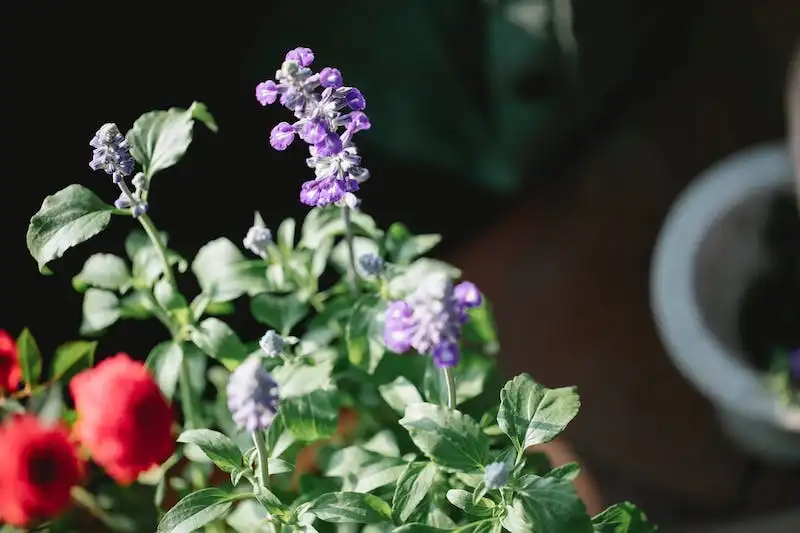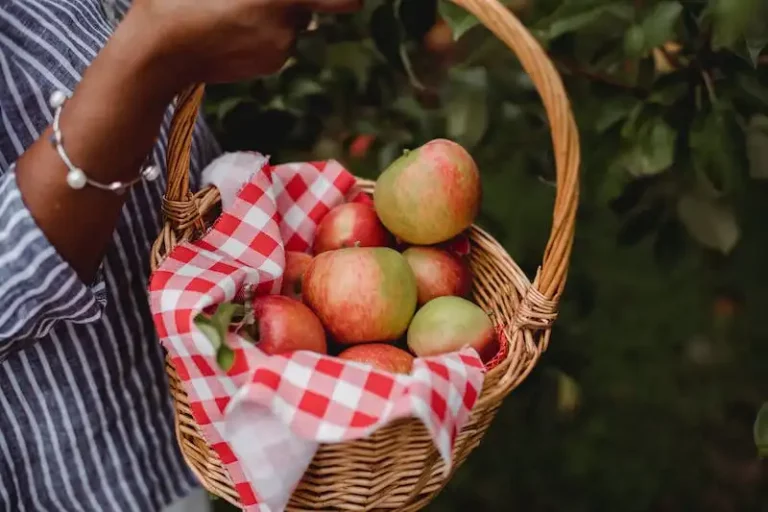Welcome to our comprehensive guide on growing pigeon peas, also known as Cajanus cajan. Pigeon peas are a versatile legume that can be grown in a wide range of conditions. In this article, we will cover everything you need to know to successfully grow and care for pigeon peas, from propagation to harvesting and preserving.
Pigeon peas are hardy plants that can thrive in various soil types, making them a great option for gardeners living in different regions. They can tolerate both dry and moist conditions, although well-draining soil is ideal to prevent damage from overwatering. These legumes are also tolerant of compacted soils and can provide a beneficial role in permaculture systems.
When it comes to planting pigeon peas, it’s important to start them in warm soil. They are sensitive to cold temperatures and will not germinate well in cooler climates. In the Caribbean, for example, they are commonly planted in the spring when the soil has warmed up. In colder regions, it may be necessary to start pigeon peas indoors and transplant them outdoors when the weather is consistently warm.
Pigeon peas can grow to a height of up to 3-10 feet, depending on the variety and growing conditions. Some cultivars have a more compact growth habit, while others may require staking. The plant produces beautiful yellow or red flowers that eventually develop into pods filled with peas. Each pod can contain anywhere from 3 to 10 peas, depending on the cultivar.
Pigeon peas are known for their nitrogen-fixing abilities, thanks to the nodules on their roots that harbor beneficial bacteria. These nodules help to enrich the soil with nitrogen, making pigeon peas a valuable crop for improving soil fertility. However, it’s important to note that excessive nitrogen can lead to excessive foliage growth and reduced yields, so it’s important to know how to manage nitrogen levels in your soil.
Harvesting pigeon peas is best done when the pods have matured and turned a yellowish-brown color. At this stage, the peas are fully developed and ready to be harvested. Depending on the variety and growing conditions, it can take anywhere from 4 to 6 months for pigeon peas to reach maturity.
Pigeon peas can be used in a variety of dishes and provide a nutritious source of protein and fiber. They have a nutty flavor and are often used in Caribbean and Indian cuisines. Some common ingredients that pair well with pigeon peas include onions, garlic, and various spices.
Preserving pigeon peas is a popular way to enjoy them throughout the year. They can be frozen or dried for long-term storage. To preserve their flavor and texture, it’s important to blanch them before freezing and ensure they are completely dry before storing them in airtight containers.
In conclusion, growing pigeon peas can be a rewarding experience for any gardener. They are relatively low-maintenance plants that provide a valuable source of food and soil fertility. Whether you’re a seasoned gardener or just starting out, you’ll find that pigeon peas are a welcome addition to any garden.
How to Plant and Grow Pigeon Peas
If you want to learn how to plant and grow pigeon peas, also known as Cajanus cajan, there are certain steps you need to follow. Pigeon peas are not just any crops; they are highly valued and widely grown in many areas around the world. Whether you’re a seasoned gardener or just starting out, you can benefit from the updated information on how to grow these heat-tolerant legumes.
First, it’s important to choose the right location. Pigeon peas prefer well-drained soils and a sunny area of your garden. They can tolerate a range of soil variations, but if the soil is heavy and waterlogged, it might cause root rot. If you live in an area with frost, make sure to plant pigeon peas after the frost season.
When it comes to propagation, pigeon peas can be directly sown in the garden or started indoors in pots. If you choose to start them indoors, plant the seeds in peat pots and transplant them outside after the last frost date. The seeds should be planted at a depth of about one inch.
Pigeon peas are most commonly grown as annuals, although in certain areas they can continue as perennials. They take about five months to mature and can be harvested once the pods turn brown and dry. The harvested peas can be used in various ways, from cooking them in delicious stews to making pigeon pea gram flour.
One of the easiest ways to cook pigeon peas is to boil them until they become soft. They can be then added to soups, stews, or rice dishes. Pigeon pea dishes are a staple in many cuisines, and they are often paired with rice for a satisfying meal.
Pigeon peas are not just tasty; they are also highly nutritious. They are a great source of protein, fiber, and various vitamins and minerals. Additionally, pigeon peas have a longer shelf life compared to other legumes, making them a valuable addition to your food storage.
In conclusion, growing pigeon peas is relatively easy, and they offer many benefits to both your garden and your health. Whether you use them for fixing nitrogen in your soil, integrating them into your permaculture designs, or simply enjoying their delicious flavors, pigeon peas are a versatile and valuable plant to have in your garden. So why not give them a try?
Just remember to manage any potential pest or disease issues, such as anthracnose lesions, by keeping your plants healthy and providing them with adequate support. Fencing can also be useful to protect your crop from animals. And don’t forget, pigeon peas have taproots, so be careful when working around them to avoid damaging the plant.
So if you’re looking to add another delicious and nutritious plant to your garden, consider growing pigeon peas. They are quick to grow, they cope well with different soil conditions, and they provide a range of benefits. Give them a try and you won’t be disappointed!
What You’ll Learn
In this section, you’ll learn about growing pigeon peas Cajanus Cajun and all the information you need to successfully cultivate this versatile legume.
Whether you’re wondering where to plant them, how many months they’ll take to grow, or what to do with the vibrant green pods they’ll produce, this article will provide you with all the answers. You’ll gain insights on the best soil conditions they require, including tips on incorporating compost and peat moss to enrich the soil.
Once you’ve planted your pigeon pea seeds, you’ll discover some valuable tips on watering, including when to water and how often to do so. Additionally, you’ll find ideas on how to arrange your plants, such as in rows or under the shade of trees. We’ll also delve into the importance of pruning and how it can affect the growth and cropping of your plants.
Throughout the seasons, pigeon peas can face certain diseases, such as anthracnose. You’ll learn how to identify and cope with these issues to ensure a healthy harvest. Moreover, propagation tips will be provided for those interested in propagating their pigeon peas. We’ll cover live cutting methods, humidity and temperature considerations, as well as different types of propagation.
Of course, we can’t forget about the mouth-watering cooking instructions. Pigeon peas are a staple in Caribbean cuisine and can be used in a variety of dishes. You’ll find tantalizing serving ideas and recipes that make the most of this versatile legume.
Last, but not least, we’ll address common FAQs, like when and where to pick the pods, how to reduce thrips infestation, and whether the whole plant needs to be harvested or just the sets. By the end of this section, you’ll be equipped with all the knowledge needed to successfully grow, harvest, and enjoy your own pigeon peas!
What Are Pigeon Peas
Pigeon peas, scientifically known as Cajanus cajan, are legumes that are widely grown for their nutritious seeds. They are also known by other names such as red gram, tur, arhar, and dal. Pigeon peas are a staple food in many parts of the world and are commonly consumed in India, Africa, and the Caribbean.
The pigeon pea plant is a short-lived perennial shrub that grows up to 4-10 feet in height. It is characterized by its trifoliate leaves and distinctive yellow flowers. The plant forms nitrogen-fixing nodules on its roots, which help to improve soil fertility. Pigeon peas are highly adaptable to a wide range of climates and can be grown in both tropical and subtropical regions.
When it comes to cultivation, pigeon peas prefer well-drained soils and require full sun exposure. They can tolerate a wide range of soil types, including sandy, loamy, and clay soils. However, they do not tolerate waterlogged or compacted soils. It is important to provide adequate spacing between plants to allow for proper air circulation and reduce the risk of diseases.
Pigeon peas have a long growth period of 150-240 days, depending on the variety. They thrive in warm temperatures ranging from 77-86°F (25-30°C) and require a minimum temperature of 60°F (15°C) for germination. High humidity levels and frequent rainfall are also beneficial for their growth.
One of the biggest advantages of growing pigeon peas is their ability to fix nitrogen in the soil. This means that they have the ability to convert atmospheric nitrogen into a form that can be utilized by other plants. As a result, they can significantly reduce the need for synthetic fertilizers, making them a sustainable choice for gardeners.
Pigeon peas are not only valuable for their nitrogen-fixing properties but also for their nutritional value. They are a good source of protein, fiber, and various vitamins and minerals. Their high fiber content can help to reduce cholesterol levels and promote digestion.
These legumes are commonly used in a variety of dishes, including soups, stews, curries, and rice dishes. They have a slightly nutty flavor and a creamy texture when cooked. Pigeon peas can be soaked overnight to reduce their cooking time or used in a make-ahead recipe.
When it comes to pests and diseases, pigeon peas may encounter some common issues. Armyworms, aphids, and leaf miners are often the main suspects. To cope with these problems, it is recommended to keep the garden area clean, remove any affected plants, and consider using organic or chemical treatments if necessary.
In summary, pigeon peas are a versatile and nutritious legume that can be a great addition to your garden. They are easy to grow and require minimal maintenance. You’ll learn along the way and find that they are a valuable crop that can provide numerous benefits to your garden and your health.




